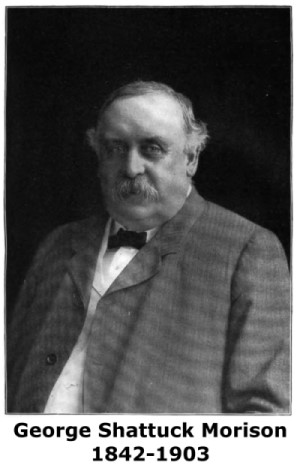We Recommend:
Bach Steel - Experts at historic truss bridge restoration.
Frisco Bridge
Memphis Bridge

Primary Photographer(s): Nathan Holth
Bridge Documented: November 6, 2016
Memphis: Shelby County, Tennessee and Crittenden County, Arkansas: United States
Metal Cantilever 28 Panel Pin-Connected Baltimore Through Truss, Fixed and Approach Spans: Metal 12 Panel Pin-Connected Warren Deck Truss, Fixed
1892 By Builder/Contractor: Baird Brothers of Pittsburgh, Pennsylvania and Engineer/Design: George Shattuck Morison
2016
790.4 Feet (240.9 Meters)
4,988.0 Feet (1520.3 Meters)
30 Feet (9.14 Meters)
4 Main Span(s)
Not Applicable

View Information About HSR Ratings
Bridge Documentation
View Historic American Engineering Record (HAER) Documentation For This Bridge
HAER Data Pages, PDF - HAER Drawings, PDF
View Tennessee Historic Bridge Report For This Historic Bridge
View Historical Articles About George Morison
View Historical Article For This Historic Bridge
View Historical Detailed Engineering Report For This Historic Bridge
This bridge is one of the most important historic bridges in the country, all on its own. What makes this setting even more unique is that this bridge sits right next to another nationally significant historic bridge, the Harahan Bridge. To top this all off, the highway bridge that is also next to these two railroad bridges is also historic, and is the Memphis and Arkansas Bridge. Three historic cantilever truss bridges over the Mississippi River side by side, two of those bridges being nationally historic: there is no other historic bridge trio like this in North America.
This bridge is one of the few surviving cantilever truss bridges that date to before 1900 in North America. Completed two years after the larger and more famous Forth Bridge in Scotland, this bridge is nevertheless significant in terms of American history as one of the earliest large-scale cantilever truss bridges. It is also the crowning achievement of engineer George Morison, who designed some of the first large-scale metal truss bridges in America, including many record-breaking spans. Most of his large-span truss bridges were simple spans however, so this cantilever truss bridge stands out as unusual among his bridges. Sadly, nearly all of Morison's bridges have been demolished, and even among those which remain today, not all are being preserved. Even this monumental, nationally significant historic bridge was as of 2016 facing the most significant alteration to its historic integrity since its construction in 1892: the entire western approach system was being demolished and replaced! While this does not affect the cantilever spans, this is regardless an alarming and disappointing outcome. The replacement of these spans is an unfortunate casualty of this bridge's remarkable status as a railroad bridge that continues, despite its age, to be used today by an enormous amount of railroad freight trains.
As might be expected of such a large bridge, more than one notable engineer was involved with it, and many contractors fabricated and constructed the bridge. In addition to Morison, who was chief engineer, noted engineer Alfred Noble was resident engineer for the project. Union Bridge Company, Pencoyd Iron Works, and the Pennsylvania Steel Company all played a role in fabrication. The main superstructure contractor was Baird Brothers of Pittsburgh.
2,597 feet of the bridge are composed of the cantilever through truss spans and the deck truss span at the western end. The length including approaches is roughly 5,000 feet. Depending on the source you use, historical reports note an overall length of 4,887 feet or 4,988 feet.

Above: Historical photo showing bridge construction. Note falsework under the half-suspended span, while in the distance the fully suspended span was erected without use of falsework.
Above: Historical photo showing newly completed bridge.
![]()
Photo Galleries and Videos: Frisco Bridge
Bridge Photo-Documentation
Original / Full Size PhotosA collection of overview and detail photos. This gallery offers photos in the highest available resolution and file size in a touch-friendly popup viewer.
Alternatively, Browse Without Using Viewer
![]()
Bridge Photo-Documentation
Mobile Optimized PhotosA collection of overview and detail photos. This gallery features data-friendly, fast-loading photos in a touch-friendly popup viewer.
Alternatively, Browse Without Using Viewer
![]()
Maps and Links: Frisco Bridge
Coordinates (Latitude, Longitude):
Search For Additional Bridge Listings:
Bridgehunter.com: View listed bridges within 0.5 miles (0.8 kilometers) of this bridge.
Bridgehunter.com: View listed bridges within 10 miles (16 kilometers) of this bridge.
Additional Maps:
Google Streetview (If Available)
GeoHack (Additional Links and Coordinates)
Apple Maps (Via DuckDuckGo Search)
Apple Maps (Apple devices only)
Android: Open Location In Your Map or GPS App
Flickr Gallery (Find Nearby Photos)
Wikimedia Commons (Find Nearby Photos)
Directions Via Sygic For Android
Directions Via Sygic For iOS and Android Dolphin Browser
USGS National Map (United States Only)
Historical USGS Topo Maps (United States Only)
Historic Aerials (United States Only)
CalTopo Maps (United States Only)





